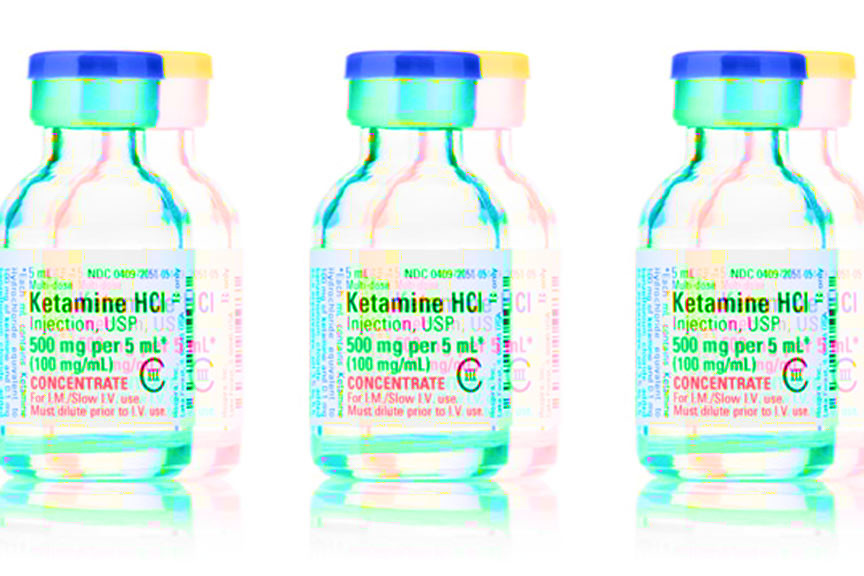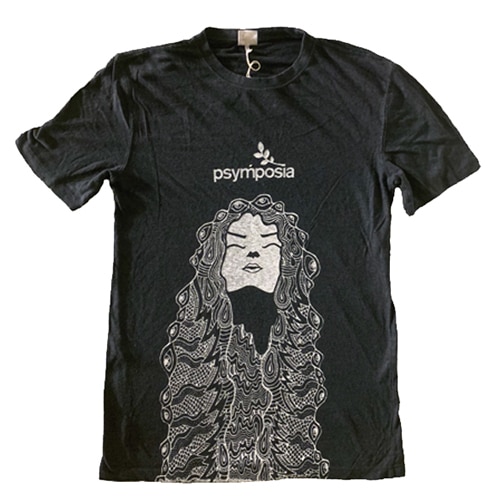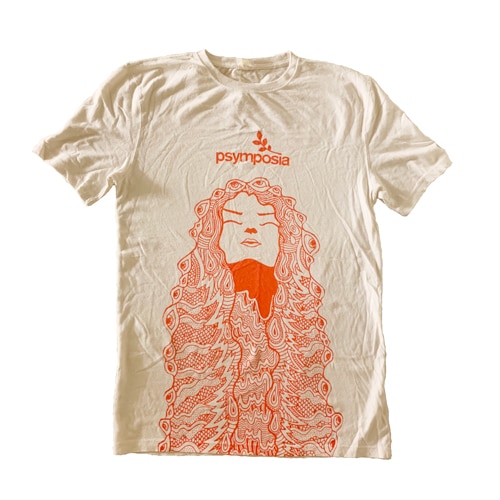A Doctor Explains How Prescribing Ketamine For Depression Works
We spoke with an experienced psychiatrist about how exactly prescribing ketamine for depression works.

Psymposia is a 501(c)(3) nonprofit research and media organization that offers critical perspectives on drugs, politics, and culture. We rely on contributions from our readers and listeners. Your support is vital to sustaining Psymposia.
Support Psymposia’s independent journalism on Patreon and help us drive the Mystery Machine! We’re a bunch of meddling kids who are unmasking the latest shenanigans on the psychedelics beat.
Ketamine is a drug that was approved by the FDA in the 1970’s to be used by doctors and veterinarians as an anesthetic.
It’s also a fairly popular recreational drug that provides out-of-body experiences.
However, even though ketamine has been legal for around 50 years, it was only in the last few years that psychiatrists began to realize this drug is actually quite effective at treating depression. According to one clinical study, around 70-85% of patients with severe depression reported that their ketamine treatment was effective.
We spoke with an experienced psychiatrist (who wished to remain anonymous) to dive deeper and learn more about how exactly prescribing ketamine for depression works.
Some psychiatrists have been prescribing ketamine off-label for depression. What does off-label mean exactly?
Off-label refers to using an FDA-approved medication for a purpose other than the indication that it is FDA approved for.
Off-label use of medications is common.
It is entirely legal to prescribe for symptoms other than the FDA-approved indication, as long as the drug is FDA approved for distribution in the US.
In order to for a drug to be approved by the FDA, it has to be proven both safe and effective for its proposed indication. All drugs have potential for adverse effects, so for a medication to be considered safe it has to have a low incidence of severe adverse effects compared to the benefits derived from treating the indicated condition.
A medication may be effective for conditions other than the FDA approved indication. It’s just that it has not undergone the extensive and expensive process of FDA approval.
As long as the medication is proven safe, physicians can legally prescribe a medication for off-label use. An approved drug has a well known safety profile, so it is generally safe to consider a medication for other conditions.
What are some examples of other medications that are prescribed off-label?
Some antidepressants that have passed FDA approval for treatment of depression have been used for neuropathic pain or chronic pain syndromes for over 30 years, but most of them are not FDA approved for pain.
Another example is trazodone—an older medication that has FDA approval for treatment of depression, but it is also very sedating to the point of making it difficult to reach the full dose for the anti-depressant effect. So, because of its sedating side effects, it has become commonly used for insomnia at lower doses. One can assume it is safe enough at lower doses to use for simple insomnia because it has been studied in higher doses in depression.
So how do doctors give the ketamine to patients once they prescribe it to them off-label?
Ketamine is given via IV in a supervised setting, using 1/10 the anesthetic dose, which is 0.5 mg / kg body weight. The effect tends to be delayed to the next day, at which time some sort of reset and release of habitual thoughts and emotions occurs, leaving an opportunity to engage in therapy to help solidify the results.
The antidepressant effect of ketamine tends to wear off within a few days.
Dextromethorphan (DXM) in the usual over-the-counter doses for cough is given twice a day to help maintain the antidepressant effect of ketamine. DXM affects similar receptors and neural pathways as ketamine at a much more mild and attenuated level. Some practitioners have been prescribing DXM in the hopes that it might augment and maintain the effects of the ketamine treatment.
A doctor in San Diego is giving oral ketamine at the same dose of 0.5 mg / kg body weight for situational depression in hospice patients with good results. He has the pharmacy compound the IV ketamine into a syrup that is administered every night for the remainder of their life (which is only a few weeks for the population that he has been treating). It is a small number of patients, but so far he has found it to be generally well tolerated and effective.
Ketamine only comes in IV formulation—there is no commercially available oral formulation. So you have to use a compounding pharmacy, where personalized medications in specific doses are created to fit the unique needs of a patient.
Ketamine for depression is experimental. There is not enough evidence of safety and efficacy to justify wide-spread off-label use at this point. For outpatients, the treatment protocols involve oral or IV administration in a supervised office setting. It is not dispensed as a prescription to be taken at home.
What are some concerns/risks in prescribing ketamine off-label for depression?
The important issue with ketamine is the fact that the use of it for depression is still highly experimental. It would not be as serious a concern if it were a simple medication like ibuprofen being used for treatment of cough—which can work when the cough is related to inflammation in the trachea.
Ibuprofen is a fairly safe medication. Ketamine is not. It can be used at anesthetic doses to induce a dissociative state in which pain is not felt. Any medication that is used for anesthesia can be lethal if overused. And ketamine has a street value as it is used as a party drug. This can result in people seeking treatment for reasons other than depression, or for people who are looking to access drugs simply to get high.
Ketamine has been studied by the FDA for one-time single use as an anesthetic. There is no data of the safety of repeated doses over time.
Use of ketamine for depression is being closely monitored and studied. The protocols stress the importance of screening out people with a history of substance abuse. There is concern that such patients might be more prone to respond to low-dose ketamine by developing addictive responses to the use of the medication.
The use of ketamine for depression is also limited to just a few treatments a week for a limited number of weeks. The problem is that the antidepressant effect wears off, so the idea is to use these days when the mood is improved to work on psychological issues and shift one’s perspective and break cycles of habitual negative thoughts.
How does that work exactly? What does the ketamine do?
The use of ketamine for depression is analogous to the use of plant medicine in shamanism.
Ayahuasca, for example, limited to a single session (or a limited series of 2-4), each time focusing on a specific desired goal of the ceremony—purging, cleansing, insight, teaching, and/or healing of a specific illness or concern. The idea is to use the insights gained from the expanded awareness and consciousness and incorporate the ideas and insights into daily life.
The goal of repeated ceremonial use of ayahuasca is to be able to access and retain the insights and expanded level of consciousness without the need for the plant. By remembering the state of expanded insight and re-entering that level of awareness consciously, you can incorporate the effects of the plant into your daily life.
So, likewise with ketamine, the idea is to enter a state of release of depression, feel what it feels like to have the burden of depression lifted, and learn to maintain that state of mind by conscious intent and practice.
Some researchers have noted that ketamine seems to break the ruts of chronic negative thoughts and negative emotional states that self-perpetuate when depressed, and by breaking the patterns for a few hours or days, you have an opportunity to move forward without continuing the patterns of negative thoughts and feelings. It’s like a reboot of a computer. A momentary shutting down, setting the dials back to zero, and then starting again. Like turning your computer off and on again to resolve a persistent and baffling problem on your computer.
A British physician from England who has been researching ketamine has suggested that ketamine is somehow addressing the “ruts” in our thoughts and emotions.
When certain negative thoughts and feelings are repeated over and over, you tend to fall back into the same ruts over and over. He feels ketamine clears out the ruts, like repaving a street, providing a smooth surface to respond and move forward in a different direction instead of following the same old paths.
Hey! Before you go… Psymposia is a 501(c)(3) non-profit media organization that offers critical perspectives on drugs, politics, and culture. We strive to ask challenging questions, and we’re committed to independent reporting, critical analysis, and holding those who wield power accountable.
Our perspectives are informed by critical analysis of the systemic crises of capitalism that have directly contributed to the unmitigated growth of addiction, depression, suicide, and the unraveling of our social relations. The same economic elite and powerful corporate interests who have profited from causing these problems are now proposing “solutions”—solutions which both line their pockets and mask the necessity of structural change.
In order for us to keep unpacking these issues and informing our audience, we need your continuing support. You can sustain Psymposia by becoming a supporter for as little as $2 a month.
Zoë Biehl
Zoë is a full-time writer and editor, holds a BA in anthropology and sociology, and spends her free time petting all the street cats in Tel Aviv.





